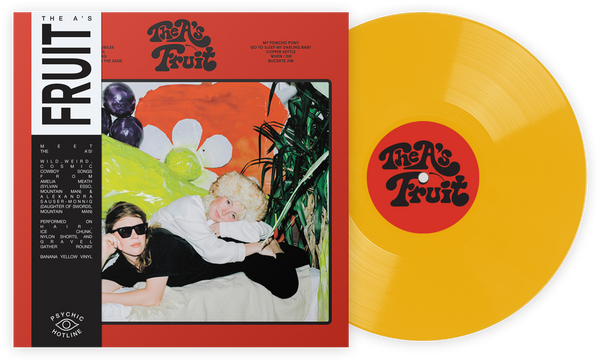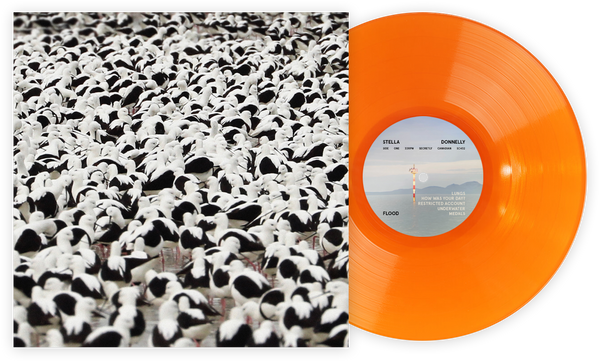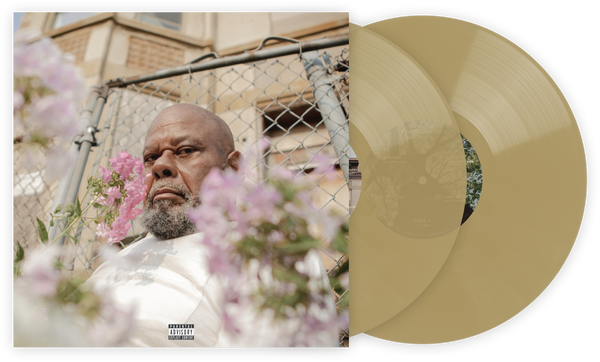Any genre that benefits from the luxury of longevity inevitably experiences a generational shift. Whether we’re talking about jazz or classical or rock ’n’ roll or hip-hop, these significant and sometimes revolutionary adjustments to established paradigms upset or upend the musical norms while inaugurating fresher talents. Some of these moments have retrospectively limited shelf lives while others fortify these sounds for the future.
No exception to this rule, heavy metal has come a long way since the days of Black Sabbath and Blue Cheer. The subsequent British new wave of the 1970s begot the American thrash coup of the 1980s, a decade that set the stage for the fragmentation of metallic subgenres including such exciting prefixes as black, death, power and stoner, among others. Each of these progressions had its adopters and its detractors, respectively necessary to signify the gravity and magnitude occuring.
Few movements in music were as successful as they were polarizing. A rather nebulously defined catch-all term, nu metal managed to amass an enormous audience while simultaneously infuriating a huge cross section of metalheads. Directly preceded by and evidently drawing influence from mid-1990s alternative and groove metal, it came into existence by fusing together heavy guitar music with hip-hop, electronica and grunge, to name a few. Notably, these bands and records that emerged around the millennium broadly appealed in ways more streamlined and templated metal forms did not. Though there’s considerable sonic and stylistic differences between Coal Chamber, Godsmack and Linkin Park, much like the Supreme Court’s definition of pornography, you know nu metal when you hear it.
Incidentally, nu metal, like just about every other metal form, had gateway potential to other styles of heavy and extreme music. Back in the late 1990s and early 2000s, nu metal’s salad days, the internet was awash in piracy, making it both easy and free to get turned onto bands even tangentially related to those one was listening to at the time. (Nowadays, it only takes a few curious clicks to go from Metallica to Converge or from Deafheaven to Pig Destroyer.) Record store chains like Sam Goody and Tower didn’t exactly divide their offerings by subgenre, nor did the publications that actually covered metal, which meant many listeners were only one recommended-if-you-like tag away from going into the deep end. Check in on a Limp Bizkit fan a year later and they might very well have gotten deep into Carcass or Immortal.
Whether you look back on the nu years with fondness or disdain, the infusion of eager young ears it brought to the decades-old genre was essential to metal’s survival. Fast forward to the 2010s and you’ll even discover a number of newer groups like Cane Hill and Islander carrying on that legacy. With that in mind, now seems as good a time as any to revisit some of the touchpoints of this often willfully misunderstood chapter in music history.
The 10 albums selected for this particular list aren’t necessarily the ones you’d expect. For the sake of expressing the breadth of nu metal talent, no artist received more than one slot, though the case for exception could certainly be made for quite a few. So instead of grousing over why your most favorite Korn record didn’t make the cut or bemoaning the inclusion of a certain rap metal act, recognize that some of these were proverbial Sophie’s choices, that this isn’t Wikipedia and that you’re better off just trying to enjoy the ride.

Sepultura: Roots (1996)
In the interim years between hair metal and nu metal, heavy music largely enjoyed a period of experimentation and extremity in the underground. But by the mid-1990s, a comparatively commercial sound began dawning. Finally following up their eponymous multi-platinum smash from 1991, Metallica gave their listeners a glimpse of things to come with the hard rock revelation Load, an unequivocal departure from their years as thrash purveyors. Similarly connected with the thrash scene, Brazil’s Sepultura too ventured away from their origins and into a groove metal style akin to Pantera. Where 1993’s Chaos A.D. dabbled, 1996’s Roots fully committed. Working with producer Ross Robinson, who’d previously helmed Korn’s debut and would later do the same for Slipknot, the band brought towering riffs and snaking basslines, all embellished with indigenous instrumentation and rhythms for a sui generis result. Nothing at the time sounded quite like the ferocious fusion of “Attitude” or the creepy crawling “Lookaway.” Frontman Max Cavalera would depart the band not long thereafter, forming the seminal nu metal band Soulfly.

Korn: Follow The Leader (1998)
Prototypical pioneers of nu metal, this Bakersfield, California, quintet already had a couple of major label albums out when their third full-length dropped. Early adopters of 1994’s darkly insular self-titled LP and 1996’s genre blueprint Life Is Peachy recognized their unabashed fusion of hip-hop and metal as distinct both from predecessors like Anthrax and Biohazard as well as contemporaries Rage Against The Machine. Korn’s difference felt palpable, from the deliberate downtuning to the American bleakness of vocalist Jonathan Davis’ lyrics. All of this congealed into a perfect zeitgeist mirror image on Follow The Leader, connecting with a generation disinterested in adhering to artificial boundaries placed between genres. (That same year, they launched the Family Values Tour, a roving concert series that intentionally mixed rap and hard rock acts for its lineup.) Huge hits “Freak On A Leash” and “Got The Life” achieved international ubiquity, while deep cuts “Dead Bodies Everywhere” and “Justin” provided established fans with the realness. Reflecting Korn’s West Coast roots, vocal guests included Ice Cube and Cheech Marin.

Staind: Dysfunction (1999)
Imbued with a certain heartfelt horror, this Massachusetts-originated group broke through thanks to a reworking of one of their older tracks. “Mudshovel” boasted the fist-clenched angst and guitar trickery of Korn’s earlier work but bolstered with an empathetic chorus. Despite co-production from Limp Bizkit figurehead Fred Durst, Dysfunction couldn’t have been further from the rap world, instead more aligned with the grungier sonics of Alice In Chains. Sonorous yet inherently fragile, Aaron Lewis’ singing voice truly set Staind apart, driving the twangy twists of “Just Go” and the chugging grooves of “Spleen.” While not devoid of heavy content, their 2001 follow-up Break The Cycle refined and diluted the elements of somber Dysfunction highlight “Home” into radio-friendly power ballads like “Fade,” “It’s Been Awhile” and “Outside,” which eventually begat Lewis’ second act as a country singer during Staind’s downtime.

Static-X: Wisconsin Death Trip (1999)
No punk kid, Wayne Static was in his mid-30s when this band’s debut album first hit stores. A former bandmate of Billy Corgan’s, his merger of electronics and guitars sounded far more aggressive than that of the Smashing Pumpkins’ Adore from the prior year. Opener and lead single “Push It” skewed closer to Rob Zombie’s industrial-tinged stompers, making Wisconsin Death Trip’s timing ideal in the wake of Hellbilly Deluxe. Beyond a shared affinity for B-movie samples, Static-X’s record never felt like it was copying what came before so much as pushing toward new extremes. “Bled For Days” and “Sweat Off The Bud” weren’t the NIN-lite of Gravity Kills or the emo-Ministry of Stabbing Westward, but hard charging tracks that managed to be endearingly anthemic without compromising on intensity. While not an overnight success nor a Billboard chart fixture, it inched to RIAA platinum certification in 2001.

Crazy Town: The Gift Of Game (1999)
With its infectious Red Hot Chili Peppers sample and head-nodding beat, “Butterfly” had a long road to No.1 on the Billboard Hot 100. That single’s 2001 late bloom inevitably and unfortunately branded Los Angeles’ Crazy Town as Limp Bizkit clones rather than contemporaries. Released mere months after the latter’s Significant Other, The Gift Of Game offers loads of rap metal madness replete with DJ AM’s deft turntablism and the dueling bars of Bret Mazur and Shifty Shellshock. Hardly the laidback affair that “Butterfly” implied, a considerable amount of the album lays the distortion on thick, such as on crunchy cuts like “Hollywood Babylon” and “Toxic.” A genuine love of hip-hop shines through on “Black Cloud” and “Players.” The raunch of “Lollipop Porn” and “Revolving Door” might turn some people off, but for better or worse this sort of sophomoric hedonism fits the Crazy Town ethos.

Kittie: Spit (2000)
The beauty of the 1990s’ alternative music boom translated to an unpredictability in the consumer-facing marketing machines of MTV and rock radio. One minute you’d be listening to Tool — the next, Silverchair. That diversity combined with the aforementioned heavy music gateways of record stores made a genre-defying band like Kittie possible. Straight outta London, Ontario, the Canadian quartet could do Deftones moodiness as well as Cannibal Corpse brutality. In lesser hands, the array of styles infused into Spit would assuredly have faltered, but this album superbly matches the tenor of its times. Following the venom of the opening title track, single “Charlotte” switches to a cleaner vocal without sacrificing the dirt of its guitar tone. Brash song titles like “Do You Think I’m A Whore?” and “Get Off (You Can Eat A Dick)” counter the masculine myopia that plagued nu metal and, quite frankly, metal at large.

Mudvayne: L.D. 50 (2000)
Fortuitously unleashed during Slipknot’s stunning rise from masked Midwest goons to millennial metal gods, founding member Shawn “Clown” Crahan had a hand in the production of this Peoria, Illinois, act’s breakthrough album. Mudvayne’s mathy mix of angular grooves and shock rock quirks placed them in a proverbial league of their own. Though the band’s audio DNA inextricably linked them to their immediate predecessors, the technical complexities and funk tendencies of L.D. 50 tracks like “Internal Primates Forever” and “Nothing To Gein” stood out against the often straightforward song structures common to nu metal. Their eclectic approach yielded both the frenetic moshpit fodder of “Dig,” the epic prog of “Severed,” and the melodic grooves of “Death Blooms.” Several years later, vocalist Chad Gray and guitarist Greg Tribbett would team up with Pantera drummer Vinnie Paul for a very different project, the cowboy-themed HELLYEAH.

Slipknot: Iowa (2001)
Just over two years after the release of their surprisingly successful first record, the Des Moines monstrosities returned even more profane and predatory with their next endeavor. Named for their home state, Iowa was in fact recorded far from their spiritual home and instead out in Los Angeles. Grappling with newfound fame and the surrounding pressures placed upon them, Slipknot delivered a grisly full-length that remixed heavy tropes into something fresh and cultworthy. Nihilism and blast beats reign over “People=Shit” and “The Heretic Anthem,” truly and finally bridging nu metal with its extreme cousins. Quickly one-upping the poppy “Wait And Bleed” from the last album, “Left Behind” improved on the formula by exploding it. Similarly, “My Plague” frantically runs through syllables and percussive hits until arriving unexpectedly at a Fear Factory-esque chorus. Subsequent albums Vol. 3: The Subliminal Verses and All Hope Is Gone continued in this spurting vein, much to the devilish delight of their fanbase of self-described Maggots.

Disturbed: Believe (2002)
Amid the rhymers, rivetheads, and rogues that populated the nu metal scene, a formidable contingent of artists were simultaneously taking the admittedly fluid genre down a more conventional and dare-I-say conservative path. A number of these groups such as Creed, Godsmack and Papa Roach scored big with alt-metal accessibility that made them ones-to-watch in hard rock. The best of the bunch, Chicago’s Disturbed, stormed Billboard’s genre-specific charts with energetic singles “Down With The Sickness” and “Stupify.” For their 2002 follow-up Believe, the group reunited with The Sickness producer Johnny K. Yet the outcome of those sessions was markedly polished by comparison, amplifying the group’s arena potential with catchy singles “Liberate” and “Prayer.” Soaring choruses and gratifying riffage define the album, as do the oft oversold vocal theatrics of David Draiman. The album debuted atop the Billboard 200, eventually earning RIAA double-platinum certification.

Evanescence: Fallen (2003)
Like the trends that came before it, nu metal too would inevitably need to yield to another wave hot on its heels, namely metalcore. Still, even as it began to fall out of favor, leaving only a handful of groups to endure rather than wither, some great records burst out of this last gasp. After several years of existence, the ultimately tenuous partnership of Amy Lee and Ben Moody at last emerged with Fallen, a gothy spin on the zombifying genre. “Going Under” and “My Last Breath” kept the record aligned with heavy music expectations, while quieter moments like ”Hello” and “My Immortal” added emotional heft. Though they initially benefited from the support of Christian music retail outlets and radio stations, Evanescence apparently prompted their label to release a statement affirming the secular nature of their songs. This came despite the inclusion of 12 Stones’ vocalist Paul McCoy on its most recognizable single “Bring Me To Life.” Nonetheless a colossal hit, Fallen eventually sold enough RIAA-certified units to reach septuple-platinum status.
Born, raised and still living in New York City, Gary Suarez writes about music and culture for a variety of publications. Since 1999, his work has appeared in various outlets including Forbes, High Times, Rolling Stone, Vice and Vulture, among others. In 2020, he founded the independent hip-hop newsletter and podcast, Cabbages.











